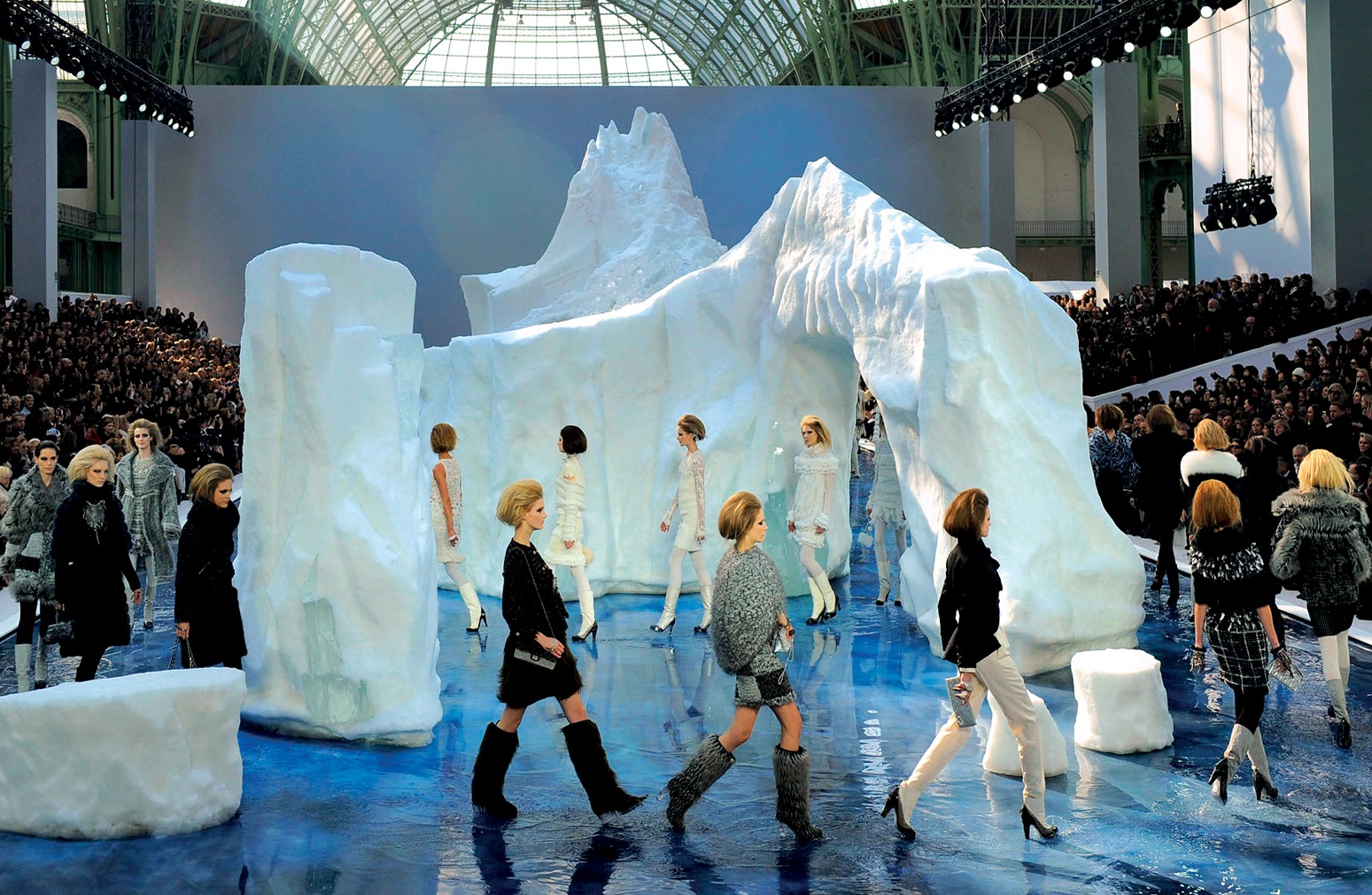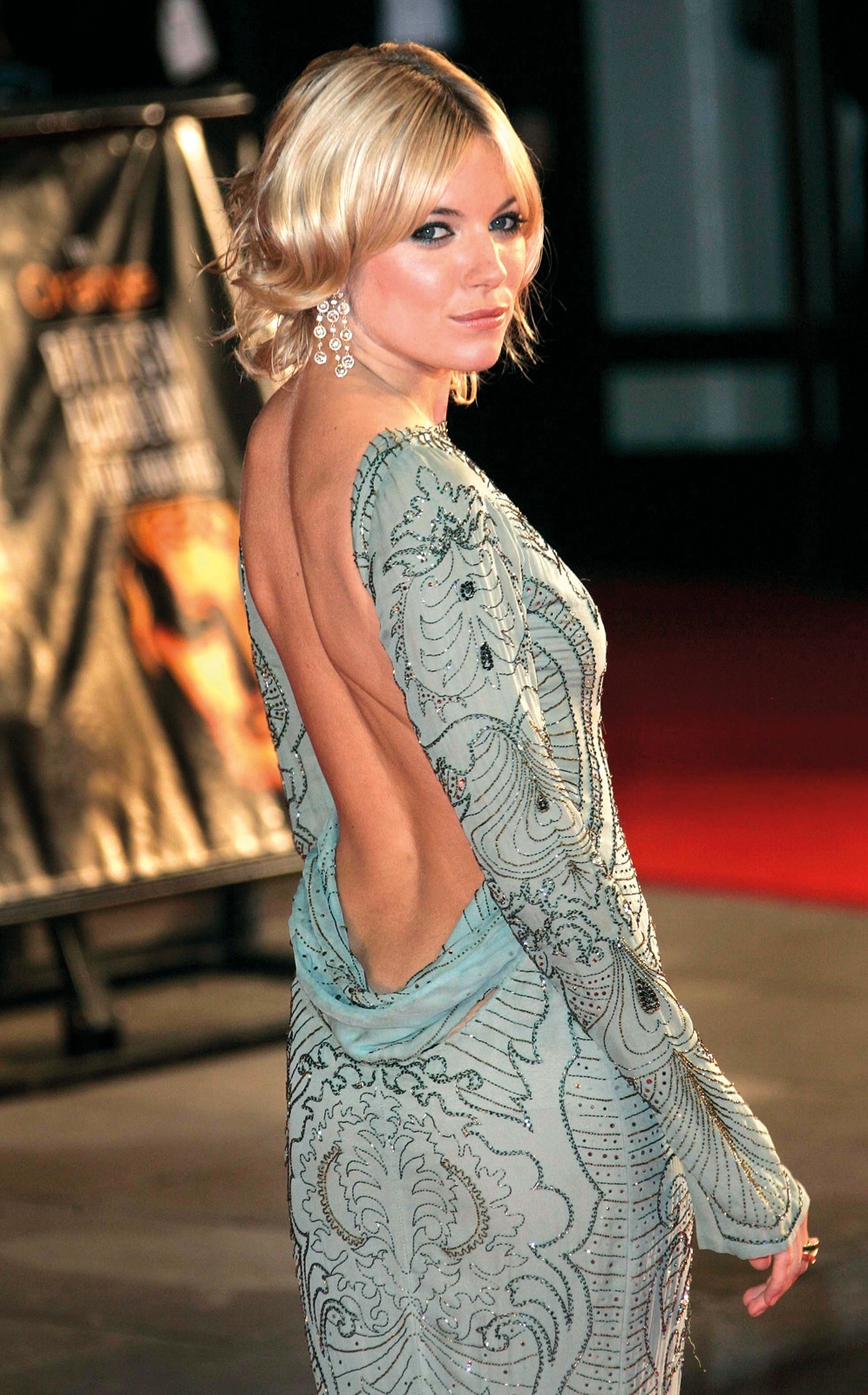
328 Chanel’s ready-to-wear catwalk show for Autumn/Winter 2010 featured shaggy fake-fur garments, which were shown against a giant ice sculpture.
At the beginning of the twenty-first century, the fashion industry has swelled to encompass increasing numbers not only of designers, brands and retailers but also of information providers able to communicate and sell fashion globally through both electronic and printed media. The pressure to conform to a single prevailing style has been lifted: while Paris, New York and Milan retain their status as the premier fashion capitals, designers operating from a multiplicity of cities, including New Delhi and Mumbai, Beijing and Hong Kong, Johannesburg and Lisbon, have developed their own distinctive identities and industries.
Since the worldwide depression took hold in 2008, designers and luxury brands have had to operate in fiercely competitive international markets. In order to secure the media coverage so critical for their image and status, huge budgets are channelled into marketing. Chanel’s Autumn/Winter 2010 catwalk show, for example, was shown against a backdrop of a 265-tonne iceberg specially imported from Sweden, which took thirty-five ice sculptors, flown into Paris from around the world, six days to carve. In 2010 the industry mourned the tragic death by suicide of vanguard designer Alexander McQueen and in 2011 was shocked by the fall from grace of John Galliano, Dior’s eclectic designer, who was sacked amid allegations of racial abuse. Both of these visionary designers were renowned for the spectacle, drama and narrative content of their catwalk shows. McQueen’s Autumn/Winter 2008 show was inspired by a visit to India and a dream about a princess who lived in a 600-year-old tree at the bottom of his garden.[329] Frothy ballerina dresses were shown alongside sharp military tailoring, regal scarlet satin ruched evening coats, cut-out lace and shredded knits. The models were adorned with bejewelled headpieces and slippers.

328 Chanel’s ready-to-wear catwalk show for Autumn/Winter 2010 featured shaggy fake-fur garments, which were shown against a giant ice sculpture.
With more than a billion people watching web videos in 2011, including the latest catwalk shows, it was perhaps inevitable that film as fashion medium would be revived and rendered entirely modern by the exploitation of digital technologies. SHOWStudio, the award-winning fashion platform established by photographer Nick Knight in 2000, has been instrumental in exploring the possibilities of, and driving, this trend. Since 2003 concept-led designer Hussein Chalayan has entwined the ethos of his collections with complex themes such as the migration of peoples, using poignant abstract and narrative techniques. While Chalayan sometimes shows independently, international designers and labels – including Halston, Yves Saint Laurent, Victor & Rolf, Alexander McQueen, Chanel, Mugler, Prada, Burberry and Gareth Pugh – have more recently shown, or incorporated, film to present their collections as part of the fashion calendar.
Among the multiplicity of fashion options presented each season, key trends can still be identified. In times of turbulent socio-economic circumstances, nostalgia becomes a dominant cultural force. By 2008 the craft-led vogue for boho-hippy trends and lean, androgynous styles was replaced with strong, structural silhouettes inspired by fashions from the 1940s and 1980s. These were characterized by shoulder pads, nipped-in waists (making belts once again desirable) and a refined palette of pale flesh tones, black and camel, or juxtapositions of bold primaries. Skinny trousers that skim the hips were replaced with high-waisted, fluid styles. Luxury fabrics that have been manipulated and embellished remain the hallmark of elite fashion and there has been a revival in the use of sequins, fur, shearling and feathers. Sensuality and gothic glamour are evident in the resurfacing of burlesque influences, underwear as outerwear, and lingerie materials, notably in pale flesh tones and black lace.

329 A model from Alexander McQueen’s catwalk show for Autumn/Winter 2008. The collection was inspired by a dream about an Indian princess.
As well as being offered multiple fashion choices, consumers can now enjoy flexible shopping opportunities 24/7. Fashion’s retail landscape has been transformed by e-commerce, which is now the fastest-growing sector of the market. Between 2006 and 2011 online international fashion sales increased by 152 per cent, significantly boosted by the new transactional websites of high street stores, while fashion applications on smartphones facilitate purchasing on the move. It is the luxury sector, which must astutely balance exclusivity with commercial imperatives, that has proved most resistant to e-commerce, fearing that luxury and online shopping are incompatible. Most designers do have a strong web presence with innovative and experiential sites, however, and will, perhaps necessarily, succumb to online trading.
Mediating between creators, retailers and consumers are online bloggers, some of whom, such as ‘The Sartorialist’ and ‘Facehunter’, have attracted a mass following; they have privileged personal – as opposed to designer-led – style and styling, not unlike ground-breaking style magazines iD and The Face, launched in the 1980s. Joining them are ‘real’ consumer voices who respond to trends and products via social networking sites such as Facebook and Twitter.
In order to reposition themselves as luxury fashion labels, a number of heritage brands have appointed talented designers to re-present their classics and inject the label with a new modern vigour. In Britain Burberry have enjoyed meteoric success with Christopher Bailey’s creative input; Paris labels Balenciaga and Lanvin have been revived by Nicholas Ghesquière and Alber Elbaz respectively, as have Yves Saint Laurent by Stefano Pilati and Céline by Phoebe Philo. Handbags are still the ‘must-have’ accessory, with the most desirable models generating waiting lists of clients prepared to pay four- and five-figure sums for their luxury products. Hermès has harnessed the talents of radical Belgian designer Martin Margiela and the bad-boy of Paris fashion, Jean-Paul Gaultier, to inject fun and modernity into its ranges, and Louis Vuitton engaged Marc Jacobs to huge critical acclaim and market success.

330 Classic French luxury luggage brand Louis Vuitton presents a bag emblazoned with a graffiti logo design in neon pink for the fashion market. Stephen Sprouse tribute collection by Marc Jacobs for Louis Vuitton, 2009.
China is predicted to become the world’s largest market for luxury goods by 2020, as fast-growing ranks of super-rich announce their style and status by indulging in elite fashion. Designers and luxury brands are not only expanding their retail operations by opening flagship stores in China, but actively addressing cultural specificities in taste. Hermès has even launched a China-specific sub-brand called Shang Xia. China is significant not only for export sales, but also for ‘imported’ fashion consumption in Europe: in 2011 it was 30 per cent cheaper for the Chinese to buy luxury goods in London than at home.
While luxury goods generate the media coverage that enhances brand cachet, they do not generate the greatest profits. In order to heighten their broader public profile and boost sales of the licensed goods and diffusion lines that do create phenomenal profits, a number of designers create special ranges for the mass market. (Since these do not compete with their exclusive lines, they do not feel compromised.) Sonia Rykiel, Matthew Williamson and Comme des Garçons are among the leading international fashion names to have designed sell-out special collections for high street fashion chain H&M, while Topshop has collaborated with cutting-edge British designers such as Christopher Kane and Jonathan Saunders and – perhaps most notably – supermodel and style leader Kate Moss.
The extraordinary power of celebrities to shape consumer choices has been a notable feature of the twenty-first century. Fashion sales have rocketed when promoted by A-list actresses, top models and popular media personalities, as well as elite society. When Catherine, Duchess of Cambridge, the new wife of the second-in-line to the British throne, was shown wearing a flesh-toned bandage wrap dress by the upmarket high street retailer Reiss in May 2011, worldwide demand resulted in a same-day sell-out. With the world’s media spotlight shining so intensely upon them, celebrities and the rich and titled engage stylists to shape their image and prevent faux pas. L’Wren Scott dresses Hollywood star Nicole Kidman, while pop singer sensation Lady Gaga is dressed by the Japanese-Italian stylist Nicola Formichetti, whose lack of formal fashion training did not deter Thierry Mugler from offering him the role of creative director in September 2010.
Operating online, Coolspotters has provided a one-stop portal for identifying the styles worn by celebrities and their fictional alter egos in film and television. Sites such as ASOS (As Seen On Screen) sell copies of clothing and accessories worn by celebrities, and those who desire a more tangible connection with their favourite celebrity can access sites that offer their ‘authentic’ worn clothes for hire. Turning full-circle, celebrities have capitalized on their visibility by launching their own fashion labels; perhaps the most successful of these has been Victoria Beckham, wife of footballer David and former pop star, whose collections of stylish dresses have been critically acclaimed and attract a celebrity clientele.

331 The wedding ceremony of Prince William and Catherine Middleton in 2011. The bride wears a dress by Sarah Burton, designer at Alexander McQueen.
The vogue for wearing vintage fashion – historical items of dress that reflect prevailing trends – has challenged the homogeneity and poor quality of mass-produced fashion; it offers individual style at affordable prices and addresses environmental concerns by recycling. Kate Moss has been seminal in creating the vogue for juxtaposing vintage items with high street and top-level fashion garments. Specialist dealers operate via auction houses (the online auction site eBay is a major purveyor of vintage clothing), retail and online outlets. At the top end of the market, museum-quality items are purchased by stylists on behalf of A-list actresses such as Julia Roberts, Natalie Portman, Penélope Cruz and Angelina Jolie, who have all been photographed wearing luxe-vintage for red carpet Oscar ceremonies. Major brands are tapping into this desire for individual expression, including the sportswear label Nike, which offers a personal customization service.

332 Supermodel and style leader Kate Moss wears a vintage dress by the French couturier Jean Dessès in 2003.

333 Actress Sienna Miller dressed in an elegant vintage backless gown by Emanuel Ungaro for the British Academy Film Awards in 2007.
While fashion is inherently ephemeral, a new term, ‘fast fashion’, has been coined to describe the low-priced, fashion-forward clothes sold on the high street. In Britain, famous for its superb high street fashion stores, it has been estimated that in 2011 the ‘average’ woman has around four times as many clothes as her counterpart owned in 1980. The result is that more and more energy, materials and labour resources are being expended and the landfill sites are brimming over.
Writing at the beginning of the 2010s it would seem that while it can never replace consumption, shopping in virtual environments offers a leisure activity and outlet to express personal fashion choices that do not require a large budget or create a carbon footprint. As we witness the rapid depletion of scarce global resources combined with the environmental consequences of over-consumption, virtual shopping might – if successfully developed – offer a fun, carefree and sustainable alternative.